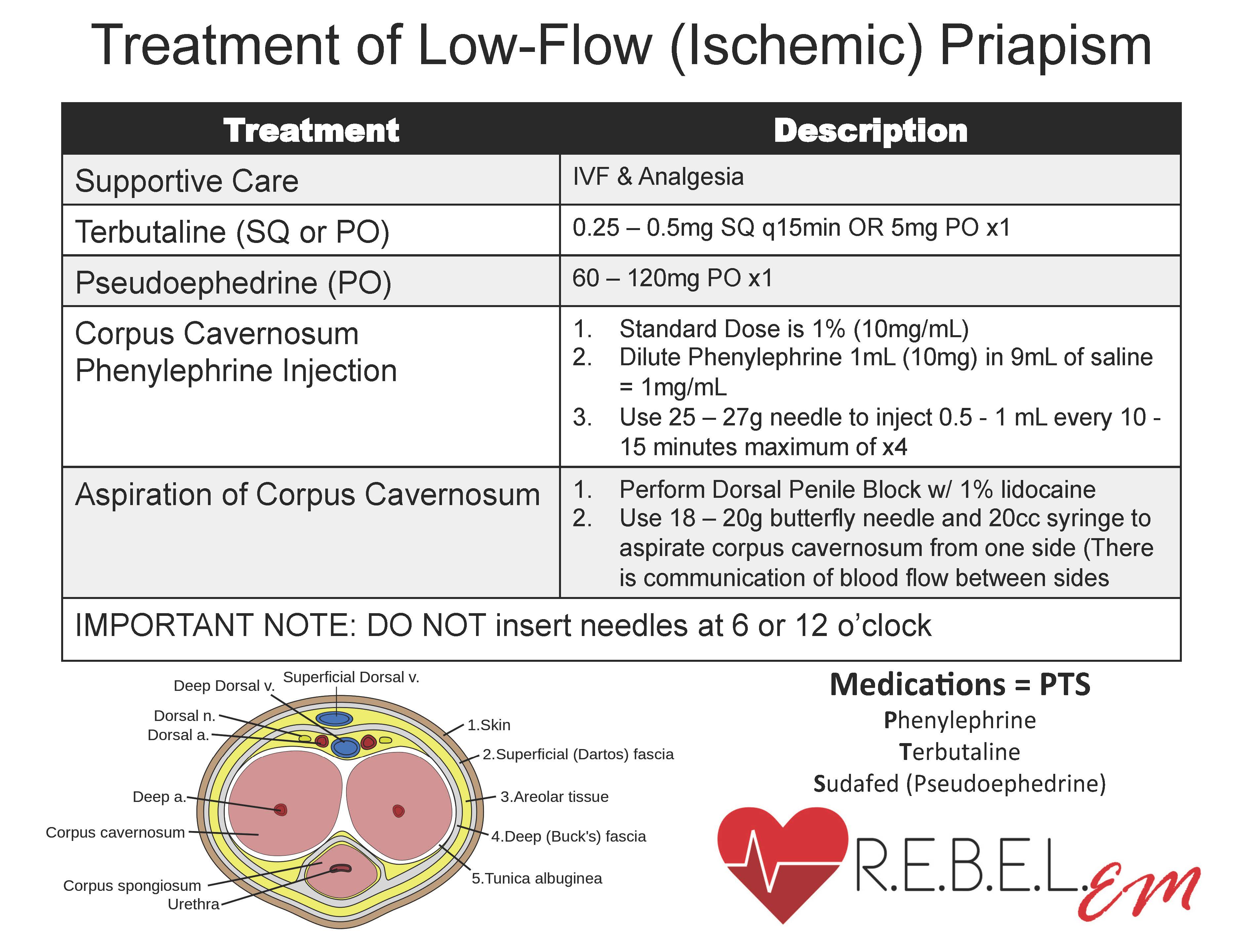Makindo Medical Notes"One small step for man, one large step for Makindo" |
|
|---|---|
| Download all this content in the Apps now Android App and Apple iPhone/Pad App | |
| MEDICAL DISCLAIMER: The contents are under continuing development and improvements and despite all efforts may contain errors of omission or fact. This is not to be used for the assessment, diagnosis, or management of patients. It should not be regarded as medical advice by healthcare workers or laypeople. It is for educational purposes only. Please adhere to your local protocols. Use the BNF for drug information. If you are unwell please seek urgent healthcare advice. If you do not accept this then please do not use the website. Makindo Ltd. |
Priapism
-
| About | Anaesthetics and Critical Care | Anatomy | Biochemistry | Cardiology | Clinical Cases | CompSci | Crib | Dermatology | Differentials | Drugs | ENT | Electrocardiogram | Embryology | Emergency Medicine | Endocrinology | Ethics | Foundation Doctors | Gastroenterology | General Information | General Practice | Genetics | Geriatric Medicine | Guidelines | Haematology | Hepatology | Immunology | Infectious Diseases | Infographic | Investigations | Lists | Microbiology | Miscellaneous | Nephrology | Neuroanatomy | Neurology | Nutrition | OSCE | Obstetrics Gynaecology | Oncology | Ophthalmology | Oral Medicine and Dentistry | Paediatrics | Palliative | Pathology | Pharmacology | Physiology | Procedures | Psychiatry | Radiology | Respiratory | Resuscitation | Rheumatology | Statistics and Research | Stroke | Surgery | Toxicology | Trauma and Orthopaedics | Twitter | Urology
Priapism = prolonged, often painful penile erection lasting >4 hours without sexual stimulation. Urological emergency – prolonged ischemia → irreversible erectile dysfunction if untreated. Prompt recognition and rapid management are essential to preserve function.
🔎 Causes
- Haematological: Sickle cell disease, Leukaemia
- Medications: Trazodone, Chlorpromazine, Lithium, recreational drugs (e.g. cannabis, cocaine)
- Intracavernosal injections: Papaverine, Alprostadil (for erectile dysfunction)
- Vascular: Pelvic thrombosis, trauma
⚡ Types
- Ischaemic (low-flow): Most common, painful, rigid. Venous outflow obstruction → hypoxia & acidosis. Emergency.
- Non-ischaemic (high-flow): Often post-trauma. Less painful, partially rigid. Usually not emergency, often resolves spontaneously.
🛠️ Management (Emergency for Ischaemic Priapism)
- Initial Measures:
- Ice packs ❄️ and compression
- Mild exercise (climbing stairs) to encourage venous drainage 🏃
- Analgesia + sedation 💊
- Pharmacological:
- First-line = Intracavernous phenylephrine (alpha-1 agonist) → vasoconstriction, improves outflow.
- Other sympathomimetics (epinephrine, etilefrine) if phenylephrine not available.
- Sickle-cell specific: Hydration 💧, O₂, opioids for pain, ± exchange transfusion.
- Mechanical:
- Aspiration of stagnant blood from corpora cavernosa using large-bore needle 💉.
- Irrigation with saline ± direct alpha-agonist infusion.
- Surgical (last resort):
- Distal or proximal shunt procedures to bypass blocked venous drainage.
- Penile prosthesis if prolonged refractory cases with necrosis/ED risk.
 📌 Key Clinical Pearls
📌 Key Clinical Pearls
- Ischaemic priapism = emergency → immediate intervention needed.
- Non-ischaemic priapism = often post-traumatic, less urgent (observe ± embolisation).
- Sickle-cell patients → higher recurrence risk, treat both priapism & underlying crisis.
- Delay >24 hrs = very high risk of permanent erectile dysfunction.
Cases — Priapism
- Case 1 — Sickle Cell Disease (Ischaemic Priapism): A 19-year-old man with known sickle cell anaemia presents with a painful erection lasting >4 hours. He is distressed and reports previous brief episodes that resolved spontaneously. Diagnosis: Ischaemic priapism due to sickle cell vaso-occlusion. Management: Urgent urology referral; aspiration of corpora cavernosa ± intracavernosal phenylephrine. Supportive measures: hydration, oxygen, analgesia, treatment of sickle crisis.
- Case 2 — Drug-Induced Priapism: A 45-year-old man with schizophrenia develops a painful erection lasting 5 hours after starting trazodone. No history of haematological disease. Diagnosis: Drug-induced priapism (ischaemic). Management: Stop offending agent; urological emergency management as above (aspiration/phenylephrine); monitor for recurrence.
- Case 3 — Malignancy-Related (Leukaemia): A 32-year-old man with newly diagnosed acute leukaemia presents with persistent painful erection for 6 hours. FBC: WCC 180 ×10⁹/L. Diagnosis: Priapism due to hyperviscosity from haematological malignancy. Management: Urgent urological management; treat underlying cause with cytoreduction (hydroxyurea/leukapheresis); IV fluids and analgesia.
Teaching Commentary 🍆
Priapism is a prolonged, often painful erection (>4 hours) unrelated to sexual stimulation. Two main types: - Ischaemic (low-flow) — most common; medical emergency; causes include sickle cell disease, drugs (trazodone, antipsychotics, PDE5 inhibitors), haematological malignancy. - Non-ischaemic (high-flow) — usually post-trauma; less painful, semi-rigid penis, not an emergency. Key principle: urgent recognition and urology referral to prevent permanent erectile dysfunction. Initial steps: aspirate blood from corpora cavernosa (dark, hypoxic in ischaemic), irrigate with saline, and inject α-agonist (phenylephrine). Treat the underlying cause (e.g. sickle cell crisis, drug withdrawal, cytoreduction in leukaemia).